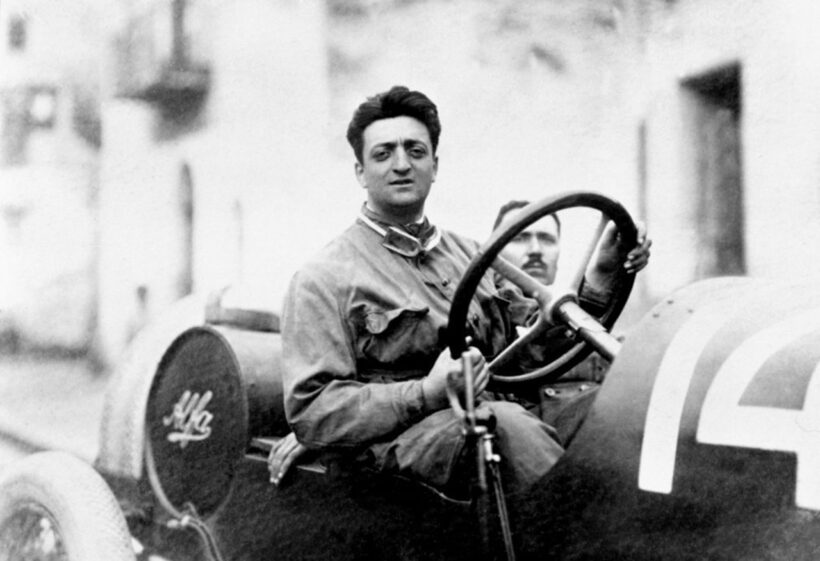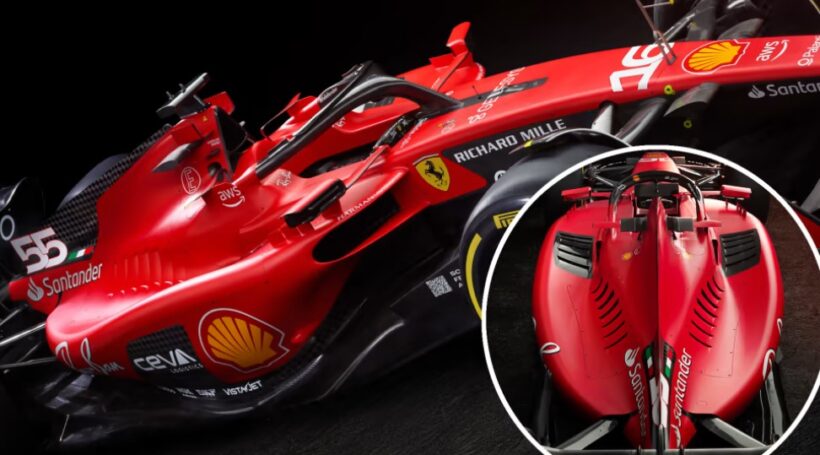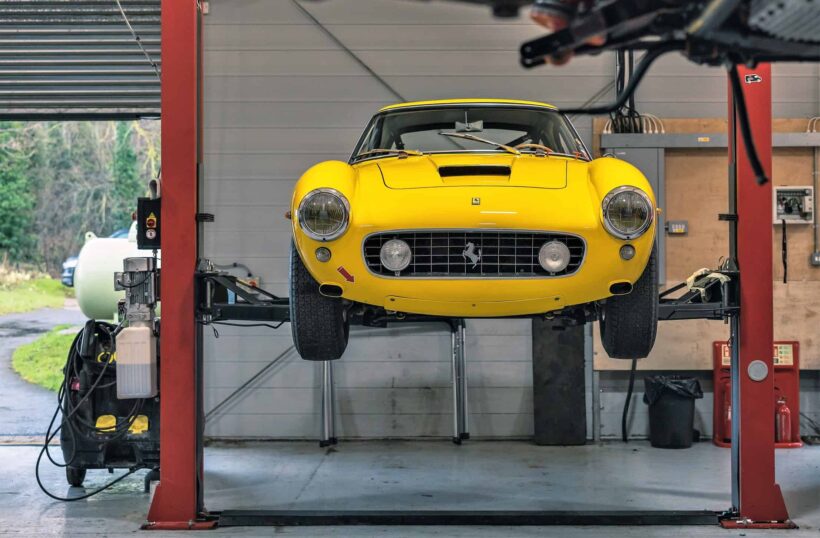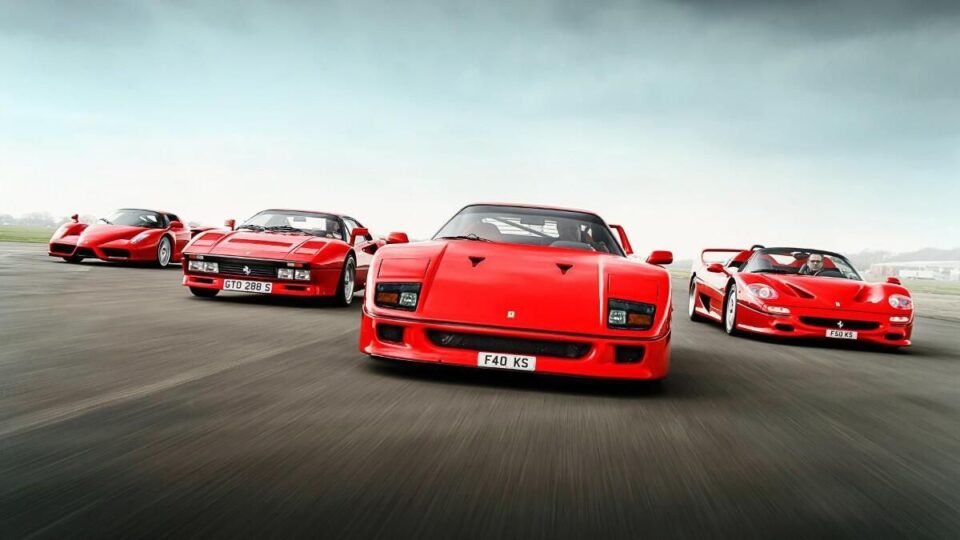Despite the decline in the era of automobiles, it is unlikely that many individuals are unfamiliar with the renowned brand Ferrari. Through its appearances in movies, television shows, music videos, car exhibitions, and prominent sporting events like Formula 1, Ferrari has become deeply embedded in global culture as a symbol of opulence and prosperity with its Italian origins.
Back in 2015, Ferrari made its debut on the New York Stock Exchange, achieving a market value of $10 billion. As we fast forward to the present day, its market value has surged to an impressive $30 billion.
The Man Himself: Enzo Ferrari

Enzo Ferrari was born in Modena, Italy, in 1898 and began his career as a professional driver during the 1920s. He joined Alfa Romeo as a driver and achieved multiple racing accolades, including a 2nd Circuito di Modena victory.
1929 – Ferrari established Scuderia Ferrari, the race team we know of the Ferrari brand today. Initially, it operated as a branch of Alfa Romeo, specializing in preparing competitive cars for upper-class individuals who participated in sports car races. During this time, sports car racing gained popularity among the affluent, as it became an exclusive activity due to its high costs.
1931 – Enzo secured a second-place finish at the Circuito Tre Province, marking his final race as a driver. He shifted his focus to his family and the arrival of his first son, Alfredo, affectionately known as Dino.
Despite retiring from racing, Enzo continued his involvement with Scuderia and designed cars for Alfa Romeo until 1939. In September of that year, he resigned as the Head of Alfa Corse and established his own automobile company, Auto Avio Costruzioni, in Modena, Italy, his hometown. As part of his departure agreement, he was prohibited from using the Ferrari name in connection with his cars or races for at least four years. In accordance with this agreement, the brand wasn’t changed to Auto Costruzioni Ferrari until 1947. The first car to bear the Ferrari brand, the Ferrari 125 S, was introduced during this period.
Brand Building with Formula 1

Ferrari has been closely associated with Formula 1 for the past 70 years, and it’s easy to understand why. Since the championship’s establishment in 1950, Ferrari has participated in every season and has achieved remarkable success. Ferrari has outperformed any other sports manufacturer with 16 Constructors’ Championships and 15 Drivers’ Championships.
The team boasts a lineup of legendary champions, including unforgettable names such as Alberto Ascari, Niki Lauda, Michael Schumacher, and Kimi Räikkönen. Schumacher, in particular, stands out as the team’s most accomplished driver, with an unprecedented five consecutive titles and 72 Grand Prix victories. In turn, the Ferrari team was the go-to answer for early sports bettors looking to wager on any given Grand Prix, specifically when Schumacher was behind the wheel.
Ferrari’s Formula 1 success may have seen a downturn in recent times, but the allure of their current drivers, Charles Leclerc and Carlos Sainz Jr., remains undiminished. These talented drivers are still hot commodities, drawing the attention of eager gamblers who are making use of a BetMGM bonus code to place their bets and add an extra layer of excitement to the races.
The Unforgettable 80s
During the 1980s, the company experienced both positive and negative developments. Enzo Ferrari passed away, and his son Piero took over the company’s reins. Fiat also increased its ownership stake in Ferrari to 90%. Although Scuderia Ferrari only managed to secure two F1 constructor’s titles during this period, the company still produced several iconic cars, such as the 288 GTO, Testarossa, and F40.
However, Scuderia Ferrari’s winning streak was far from over. In the 2000s, the team went on to win an impressive 13 world titles. The company also succeeded, opening its first Ferrari store in Maranello in 2002. These stores proved to be highly successful, leading to the establishment of 30 Ferrari stores worldwide, including locations in Russia, Dubai, and Abu Dhabi. Notably, in 2015, Ferrari became a publicly traded company.
Engineering and Innovation

Ferrari’s rise to legendary status in the world of sports cars is fundamentally rooted in its unwavering commitment to engineering excellence and relentless innovation. Since its inception, the brand has consistently set new benchmarks in automotive technology, resulting in high-performance cars that are not merely vehicles but works of art coveted by enthusiasts and collectors alike.
Striving for Excellence: At the heart of Ferrari’s engineering prowess is an unyielding pursuit of excellence. The company’s dedicated team of engineers and designers continually push the boundaries of what’s possible, from developing cutting-edge aerodynamics to crafting lightweight materials that enhance performance without compromising safety.
Innovations on the Track: Ferrari’s involvement in motorsports, particularly Formula 1, has been a crucible for innovation. Technologies developed on the race track often find their way into production models, such as advanced aerodynamics, hybrid powertrains, and electronic driver aids. This synergy between racing and road cars has set Ferrari apart.
The Pursuit of Speed: Ferrari’s commitment to speed is exemplified by its iconic V12 engines and advanced transmissions. Innovations like the “Manettino” dial, which allows drivers to select different driving modes, demonstrate Ferrari’s dedication to putting control and power in the hands of the driver.
Ferrari’s Influence on Supercar Culture

Ferrari has not only set the bar for performance but has also played a pivotal role in shaping the broader supercar culture. Its designs, engineering innovations, and racing successes have reverberated throughout the automotive world, influencing the standards for sports cars and exotic automobiles.
Design Aesthetics: Ferrari’s iconic design language, characterized by sensual curves, aggressive lines, and signature red paint, has become a blueprint for supercar aesthetics. Other manufacturers often draw inspiration from Ferrari’s design cues, attempting to capture the same allure.
Performance Paradigm: Ferrari’s relentless pursuit of speed and precision has redefined the expectations of what a supercar can achieve. This influence can be seen in the quest for ever-higher horsepower figures, lightning-fast acceleration, and track-focused performance among competitors.
Heritage and Legacy: The rich heritage of Ferrari, with its storied racing history and iconic models like the 250 GTO and F40, continues to inspire new generations of car enthusiasts. Ferrari’s legacy is a testament to its enduring impact on the supercar culture.
Ferrari as a Modern Marvel: In the continuum of Ferrari’s legacy, the Ferrari 488 holds a special place as a modern marvel. Launched in 2015, the 488 series, including the GTB and Spider variants, marked a new era in supercar engineering. With its twin-turbocharged V8 engine with stunning 661 horses under the hood, the 488 delivers breathtaking performance while adhering to contemporary emissions standards.
Ferrari Is Here to Stay
Enzo Ferrari famously proclaimed that his motors “have a soul.” Is he mistaken? Despite his passing in 1988 at 90 years of age, Ferrari’s vehicles still retain the same fervor and essence they always had. Both longstanding and recent customers are said to value and treasure the intangible ‘spirit’ of these luxury cars. And when it comes to a superior marketing instrument, nothing surpasses a sentiment – an indescribable quality that has catapulted your brand to become one of the most influential worldwide.

